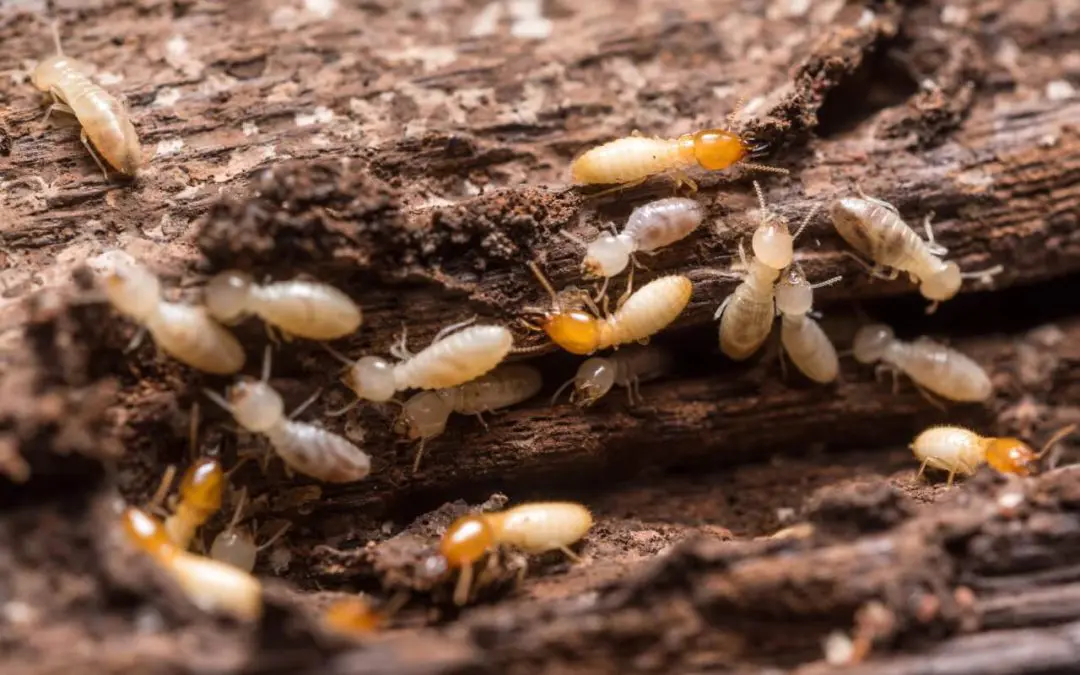Termites are tiny, wood-eating insects that can cause significant damage to homes. Often referred to as “silent destroyers,” termites can compromise the structural integrity of a house by feasting on wood, paper, and other cellulose-based materials. Preventing termite infestations is crucial for maintaining the safety and value of your property. You can prevent termites with these fundamental tips.
Identifying Termite-Friendly Conditions
Termites thrive in environments with ample moisture, wood, and warmth. To prevent termites, it’s essential to recognize and eliminate these conditions in and around your home. Common sources of moisture include leaky pipes, improper drainage, and poorly ventilated crawl spaces. Wood sources like firewood piles, wooden structures in contact with soil, and untreated wooden building materials can also attract termites.
Ensuring Proper Drainage Will Prevent Termites
Proper drainage is vital to keeping termites at bay. Ensure your gutters and downspouts direct water away from your home’s foundation. Install splash blocks or extenders if necessary to prevent pooling near the base of your house. Regularly check for leaks in pipes and fix them promptly to avoid creating moist environments conducive to termite activity.
Maintaining a Dry Home Environment
Maintaining a dry home environment is crucial in termite prevention. Use dehumidifiers in basements and crawl spaces to reduce moisture levels. Proper ventilation in attics and crawl spaces can help prevent condensation. Insulating these areas can also regulate temperature and moisture, making them less appealing to termites.
Reducing Wood-to-Soil Contact
Reducing wood-to-soil contact is another effective way to prevent termites. Ensure that wooden structures like decks and fences are constructed with treated wood and do not touch the soil. Use concrete or metal supports to create a barrier between the soil and any wooden parts of your home. Store firewood and other wooden materials at least 20 feet from your home and elevate them off the ground.
Using Termite-Resistant Materials
Consider using termite-resistant materials for construction and renovations. Concrete, steel, and certain types of treated wood can deter termites. When building or renovating, consult a contractor to choose materials that naturally resist termite damage.
Regular Home Inspections
Regular home inspections are crucial for early detection and prevention of termite infestations. Schedule annual inspections with a professional pest control company to thoroughly check for signs of termites. Be vigilant about inspecting your home for mud tubes, discarded wings, and damaged wood, which are common indicators of termite activity.
Chemical Treatments and Barriers to Prevent Termites
Chemical treatments and barriers can provide an additional layer of protection against termites. Liquid termiticides can be applied to the soil around your home to create a barrier that termites cannot cross. Bait stations can also be installed to attract and kill termites before they reach your home. Consult a pest control professional to determine the most effective and safe treatment options for your situation.
Landscaping and Yard Maintenance to Prevent Termites
Proper landscaping and yard maintenance can also help prevent termite infestations. Keep mulch and vegetation away from your home’s foundation. Trim back trees and shrubs to prevent them from touching your house, as these can provide pathways for termites. Regularly remove dead trees and stumps from your yard, which serve as termite food sources.
Preventing termites requires proper home maintenance, regular inspections, and proactive measures. By understanding the conditions that attract termites and taking steps to eliminate them, you can protect your home from these destructive pests. Regular vigilance and professional assistance help keep your home termite-free and structurally sound.
FAQs
What are the early signs of a termite infestation?
Early signs of a termite infestation include discarded wings near windows and doors, mud tubes along your foundation, hollow-sounding wood, and small piles of frass (termite droppings). If you notice any of these signs, contact a pest control professional for a thorough inspection.
Can termites cause damage to non-wood materials?
While termites primarily feed on wood, they can also damage other materials that contain cellulose, such as paper, cardboard, and some fabrics. Additionally, termites can tunnel through materials like drywall and plastic in search of food, potentially causing further damage to your home.
Does homeowners insurance cover termite damage?
Most homeowners insurance policies do not cover termite damage, as it is considered preventable through regular maintenance and inspections. It’s important to review your policy and consider purchasing additional coverage if available, or take proactive measures to prevent infestations and reduce the risk of costly repairs.
How long do termite treatments typically last?
The duration of termite treatments can vary depending on the type of treatment used. Liquid termiticides can last five years or more, while bait systems may require regular monitoring and replenishment. It’s essential to follow up with regular inspections and maintenance to ensure the long-term effectiveness of the treatment. Consulting with a pest control professional can provide more specific information based on your situation.
Wild Rose Property Inspection provides professional home inspection services to customers in the Alberta area. If you’re buying or selling a property, contact us to request an appointment.

